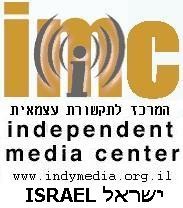
http://indymedia.org.il
Peace Now: NIS 2.2 billion went to settlementsThursday 23 Jan 2003
author: Nadav Shragai
summary
Some NIS 2.2 billion of state funds were transferred to West Bank settlements in 2001, according to a Peace Now study. The study was conducted by economist Dror Tsaban, formerly a budget official and assistant director general in the Finance Ministry. It is based on a partial estimate of the allocations of various cabinet ministries to the settlements.
The estimate does not include the security budget, the Education Ministry budget and allocations to state supported bodies and institutions.
The study shows that the "surplus allocations" for settlers out of the NIS 2.2 billion basket is NIS 1.76 billion a year. "Surplus allocations" are defined as investment in infrastructure - which Peace Now says is redundant - surplus caused by per capita budget which is higher than the average per capita allocation in Israel, and benefits given settlements which are defined as areas of national priority (mainly income tax exemptions).
The study's main findings are:
The overall annual income tax benefits to West Bank settlers is estimated at an annual NIS 200 million.
The budgets transferred to settlements as part of the Jewish Agency's settlement division reached NIS 114 million in 2001 (infrastructures and developing production means).
The study found a NIS 618 million "surplus budget" in the current budgets which the labor and welfare, interior and education ministries pass on to the local councils.
Tsaban examined the state budget's part in the local authorities' current budget per capita in 2001. He found that via this clause, a resident of a West Bank town received an average of NIS 2,402 in 2001 compared to an average NIS 1,413 per town resident within Israel. A West Bank local council resident received an average NIS 3,549 compared to NIS 2,536 received by a local council resident within the Green Line. A resident of a regional council in the West Bank received an average of NIS 5,529 compared to NIS 3,454 per regional council resident within the Green Line. Altogether a West Bank resident received an annual average of NIS 3,416 of the current local councils' budget, compared to NIS 1,763 per resident of local councils budgets within the Green Line.
Housing budget - In 2001 the government allocated funds to help purchase apartments in the territories to the sum of NIS 374 million, constituting 6.9 percent (more than double the proportional part of the settler population, which was that year 2.93 percent of the Israeli population). Altogether the development and infrastructure budgets earmarked for the Housing and Construction Ministry in the territories in 2001 is NIS 186 million. These budgets constitute about 9.4 percent of the Housing Ministry's overall budget for developing infrastructures and public institutions.
Transport - In 2001, some NIS 396 million were allocated for the West Bank from the Transport Ministry's budget for road maintenance and development, almost 10 percent of the overall ministry budget for these clauses.
Developing industrial areas - In 2001 some NIS 28 million were invested in developing employment centers in the territories, from the Industry and Trade Ministry's budget.
Developing water sources - As part of a program called "Water works - peace agreements" some NIS 41 million were allocated in 2001.
Developing tourist infrastructures - In the absence of data from 2001 Peace Now examined the budget of 2002, finding NIS 5 million earmarked to develop tourist infrastructures in the territories.
The study points to two examples of budgets which found their way to the settlements, although they are not included - at least not formally - in the state budget. One is the health budget: surplus costs of the National Health Clinic for operating clinics in the West Bank. The other is Mifal Hapayis, the state lottery, which, according to its own advertisements, intends to allocate NIS 20 million to settlements in the years 2002 and 2003.
The Yesha settlers council blasted the report as manipulative and said it bends the data to serve the political purposes of those who ordered it. "Yesha settlers are the only sector in the state who paid more income tax in 2001 than in previous years, after the discount it had was cut. West Bank residents who live in confrontation settlements are discriminated against compared to the residents of the Negev and Galilee, which still get a 15 to 20 percent discount, while in the West Bank it was slashed to 5 percent," the council said.
The West Bank councils' budget includes security issues as part of their current budget and expenses deriving from the security situation following the war now taking place in the West Bank, Yesha council commented.
The West Bank's housing budget "includes funding for moving day care centers in caravans, and in dangerous areas, to permanent structures. The housing budget is also affected by the constant population increase. The mortgages are based on the high demand of new settlers and second generation settlers."